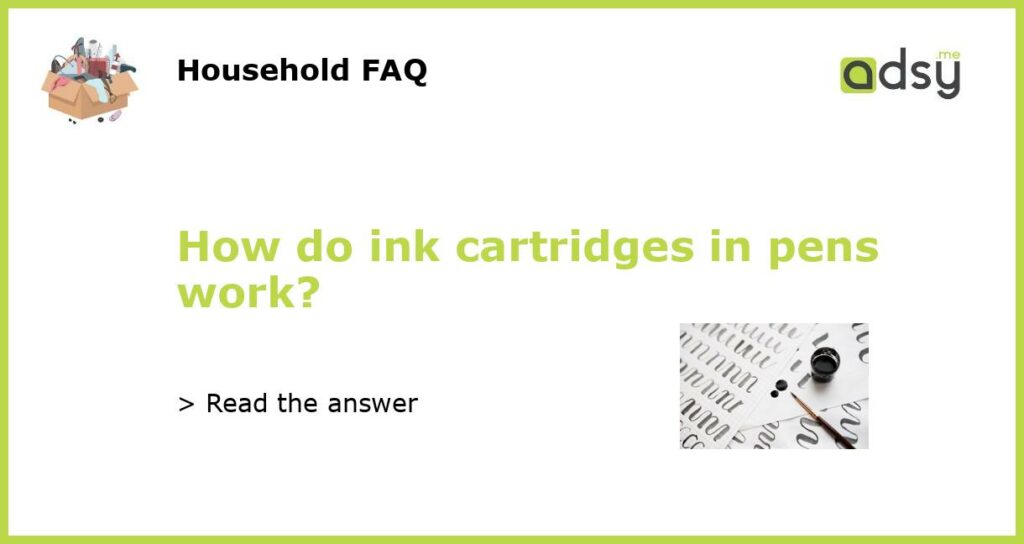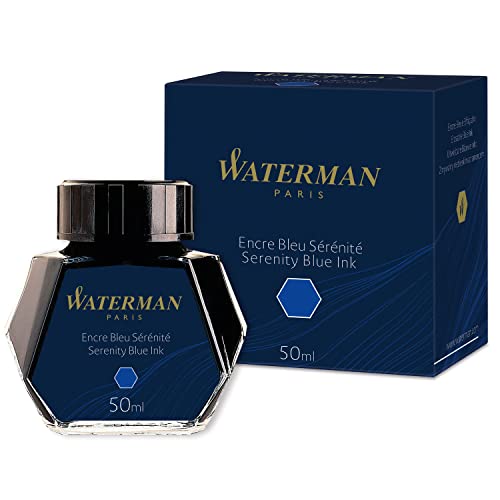How Ink Cartridges in Pens Work
Whether you use a traditional pen or a high-tech one, the ink cartridges play a vital role in ensuring a smooth and consistent flow of ink onto the paper. Ink cartridges are small containers that hold the ink and release it onto the paper through a series of mechanisms. Let’s take a closer look at how ink cartridges in pens work.
The Basics of Ink Cartridges
Ink cartridges are typically made up of two main components – the ink reservoir and the delivery system. The ink reservoir is where the ink is stored, while the delivery system controls the flow of ink from the reservoir onto the paper.
The Ink Reservoir
The ink reservoir is a small container that holds the ink. It can be made of plastic or metal and is designed to keep the ink from leaking or evaporating. Inside the reservoir, there is a sponge or a wick that keeps the ink evenly distributed and prevents it from drying out.
The Delivery System
The delivery system is responsible for controlling the flow of ink from the reservoir onto the paper. Depending on the type of pen, this system can vary. In a ballpoint pen, for example, the ink is stored in a small tube inside the cartridge. As the pen is used, a small ball at the tip of the pen rotates and picks up the ink from the tube. The ball then transfers the ink onto the paper as it rolls across the surface.
In a fountain pen, on the other hand, the ink flows from the reservoir through a series of channels and onto the paper. The flow of ink is regulated by a combination of gravity and capillary action. When the pen is held in an upright position, gravity pulls the ink down towards the nib. As the nib comes into contact with the paper, capillary action draws the ink onto the surface.
The Different Types of Ink Cartridges
There are several types of ink cartridges available in the market, each designed for specific types of pens. The most common types include:
1. Universal Cartridges
Universal cartridges are compatible with a wide range of pens and are readily available in stationery stores. They are designed to fit into most pens without any modifications. Universal cartridges are typically filled with standard ink, making them suitable for everyday writing tasks.
2. Proprietary Cartridges
Proprietary cartridges are specifically designed for a particular brand or model of pen. They cannot be used with other pens unless they are compatible. These cartridges often offer a broader range of ink colors and may be available in specialty formulations, such as washable or waterproof inks.
3. Refillable Cartridges
Refillable cartridges can be reused multiple times by filling them with ink from a bottle. These cartridges are especially popular among fountain pen enthusiasts who prefer to use different ink colors or types. Refillable cartridges offer more flexibility and can reduce waste associated with disposable cartridges.
Advantages and Disadvantages of Ink Cartridges
Ink cartridges offer several advantages over other types of writing devices. They provide a consistent ink flow, making it easier to write smoothly. They also allow for a greater variety of ink colors and formulations, allowing users to personalize their writing experience.
However, ink cartridges also have some drawbacks. They can be expensive to replace, especially for higher-end pens or specialty inks. Some cartridges may also have a limited ink capacity, requiring frequent replacements or refills. Additionally, if not handled properly, ink cartridges can leak or dry out, affecting the overall performance of the pen.
Taking Care of Your Ink Cartridges
To ensure the longevity and performance of your ink cartridges, it is important to take proper care of them. Here are some tips:
1. Store the cartridges in a cool and dry place to prevent ink from evaporating or drying out.
2. Avoid exposing the cartridges to extreme heat or cold, as it can affect the ink quality.
3. Handle the cartridges with clean hands to prevent any dirt or oils from contaminating the ink.
4. If using a fountain pen, clean the pen regularly to prevent ink buildup in the cartridge and nib.
By following these simple tips, you can ensure the longevity and optimal performance of your ink cartridges.






